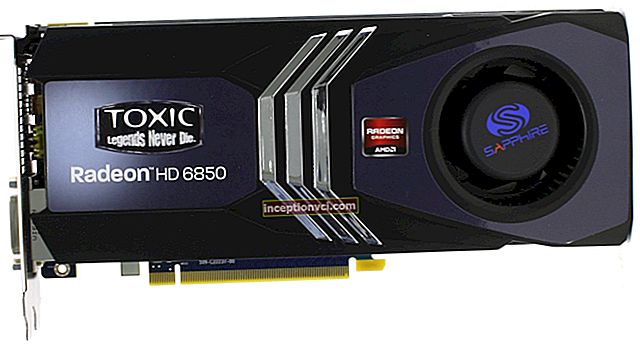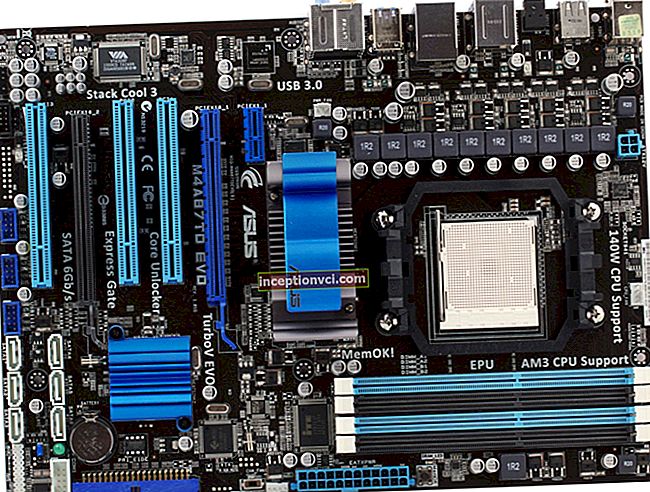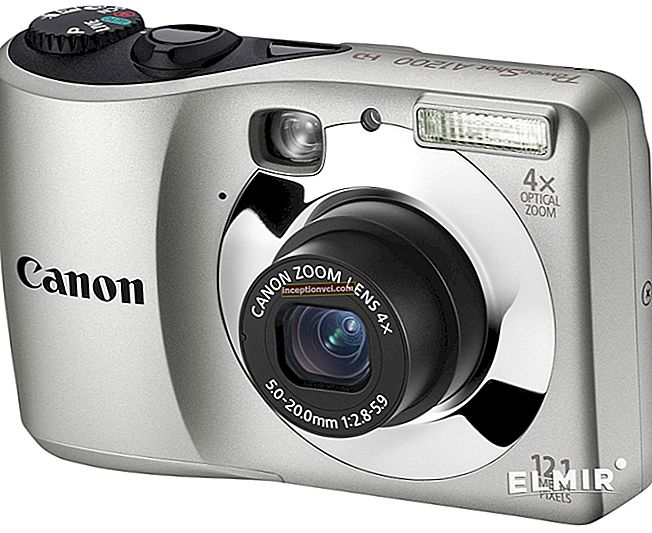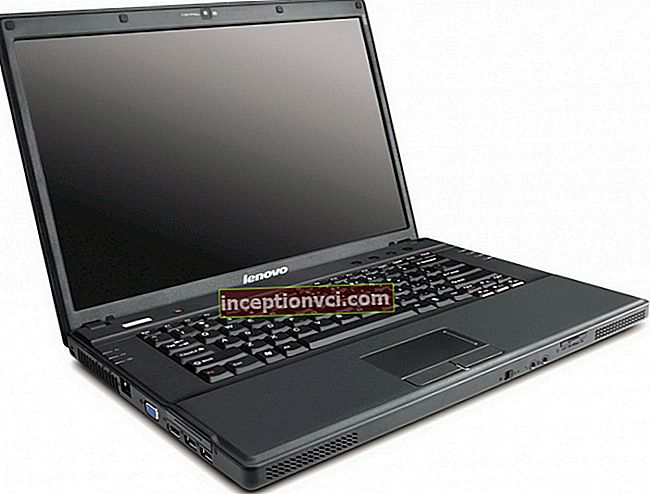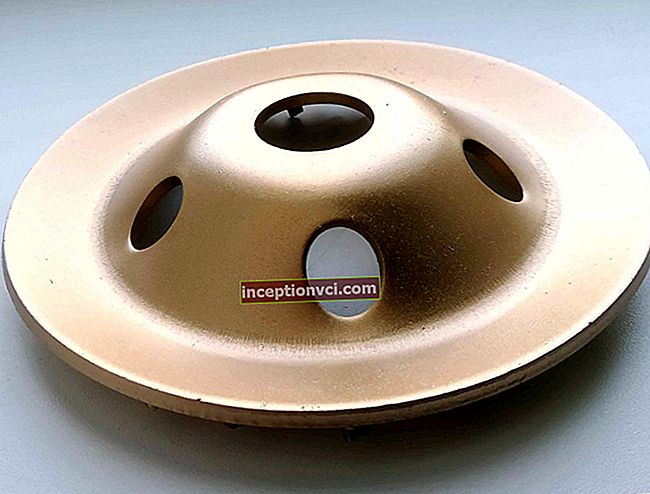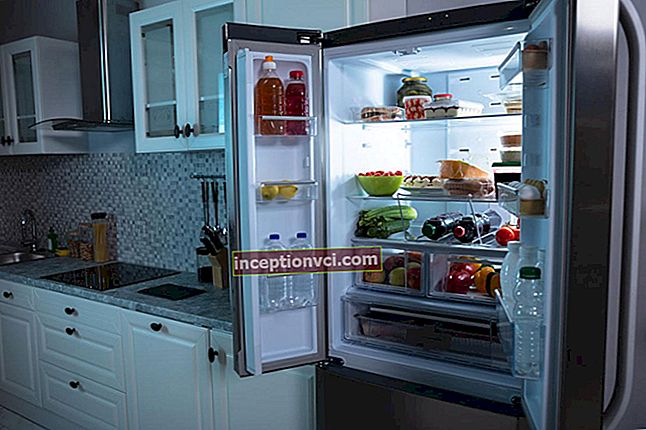Computer energy diet
A fast computer is like a sports car: high speeds require a lot of energy.
Are you often a little surprised when you receive your last electricity bill? Yes, in our country, prices only do what they grow. Therefore, there is only one way out: to save energy while preserving the environment. The most effective and easiest way to reduce power consumption is to moderate your computer's appetite, as it consumes up to 20% of the electricity in your home, depending on the configuration. For comparison: a standard incandescent lamp consumes from 40 to 60 watts, a gaming computer - 200 watts. A hot water washer eats up to 3000 watts - but in just ten minutes. The computer, on the other hand, is often turned on around the clock. Washing at 60 ° C takes about the same amount of energy as five hours of surfing the Internet - about 1 kWh. Thus, the Internet user consumes the same amount of energy in 24 hours as it takes to wash five full tubs of laundry. You can save a lot on costs with our guide to reducing energy consumption.
Diet for the computer: How to reduce the power consumption of your PC?
Shop carefully: New computers or monitors often have a lot of appetite. Therefore, we have compiled a list of the best devices. We will tell you the test winner, that is, a productive system that costs less to run. Since even the most economical equipment begins to work efficiently only after performing energy tuning, we recorded the utilities necessary for this on the disk attached to the magazine. This article will show you how to make the best use of these applications.
Uncover hidden vampires: Many devices, such as a printer, TV, or external hard drive, drink electricity aimlessly in standby mode. Disconnect them from the mains using a power strip with a switch.
Optimize Windows: By optimizing the operating system settings, you can save a lot of energy. The easiest and fastest way to achieve the desired result is to adjust the power saving settings using the Power Options tab in the Control Panel of Windows XP or Windows Vista. On the Power Plans tab, select the Battery Saver or Eco-Mode profile.
Lower the frequency and voltage of the CPU: Modern central processors, such as AMD Athlon 64 or Intel Core 2 Duo, already have built-in energy-saving technologies: Intel calls the technology SpeedStep, AMD calls it Cool'n'Quiet. But in Windows Vista, they don't always work. The operating system determines to what extent it is necessary to lower the frequency, but the corresponding ACPI (Advanced Configuration and Power Interface) values are obtained from the BIOS. If the outdated BIOS cannot recognize Windows Vista, you will have to forget about the built-in power saving features. In addition, the operating system does not allow setting the processor operating points (P-State), that is, it does not allow changing the correspondence between the clock frequency and the core supply voltage. The default operating points are not optimal for all types of tasks and all processor models. Below we will explain how to adjust the work points.
The RightMark CPU Clock Utility (RMClock) program will help us with this, which has direct access to the power supply settings of the central processor. In contrast to overclocking, reducing the power supply does not damage the equipment, which means you can safely experiment with different clock speeds and voltages that do not exceed the nominal values. If the CPU does not receive enough power, then this will only lead to an error in the calculations.In this case, the voltage parameter should be increased. The RMClock distribution can be found on the enclosed CD or downloaded from the official website of the developers. After starting the application, go to the "CPU info" section and make sure that the program recognizes your CPU and its power supply options. The "CPU Model" column will display your processor model, while the "Multiplier (FID)" and "Req. Vcore (VID) ”- current (Current), starting (Startup), minimum (Minimal) and maximum (Maximal) multiplier and processor voltage. Please note that under no circumstances should the maximum voltage be exceeded, otherwise the equipment may be damaged. In the "Profiles" section, you can configure the processor power consumption patterns. To reduce power consumption, the most interesting scheme is "Performance on demand" (performance on demand). To enable it, go to the "Profiles" section and under "AC power" (and "Battery" if you have a laptop) select the "Performance on demand" option. Further tuning comes down to adjusting the processor operating point tables. In the "CPU performance states editor" menu, select the minimum voltage value in the "VID" column for the "Index 0" point. The application will reconfigure the parameters for other values automatically. The values of the new operating point table have been defined.
Now we need to replace the default operating point table with the one we have created. To do this, go to the "Performance on demand" subsection of the "Profiles" section and activate the "Use P-state transitions" (PST) option. In the "Index" column, put a check mark in front of all values. Please note that for a laptop, the steps described above must be done twice: for the "AC power" and "Battery" columns. If the processor is unstable, then the minimum voltage for the "Index 0" point in the "Profiles" section should be raised and the steps for creating and replacing the operating point table should be repeated.
Optimize your BIOS settings:
Even if the computer is in standby mode, it consumes a lot of power. This is often caused by incorrect BIOS configuration. In some cases, the CPU and other devices may continue to consume power even in standby mode. A modern multi-core processor consumes up to 65 W, and a Pentium D - up to 120 W, which is a significant part of the power consumption of a computer in operating mode. To reduce standby power consumption, we recommend that you optimize your BIOS settings. To enter the BIOS, you must press the appropriate key before loading the OS. Which one - is briefly indicated on the display when the computer boots up. Usually this is either F1 or DEL. Navigation in the BIOS is carried out in different ways, depending on the type, but every modern computer has the ability to activate the S3 (Suspend-to-RAM) mode. In this mode, most of the computer's devices are turned off. Only the RAM and the devices necessary to save the information in it work. Power consumption does not exceed 3 W.
Choose a video card according to your needs:
The most greedy consumers of electricity in a computer are not always the motherboard and the central processor. Oftentimes, a video card requires more. Therefore, gamers who do not want to face decent operating costs in their quest for maximum performance should also exercise caution.
Determining the maximum power consumption of a video card is relatively easy. A PCI Express x16 1.0 expansion port or an optional six-pin power connector can deliver up to 75W, a PCI Express x16 2.0 expansion port or an eight-pin auxiliary power connector up to 150W. Thus, if you need to connect one or even two additional power cords to the board, you can be sure that at full load it will consume up to 225 watts.A computer with a built-in video adapter consumes only 80 to 120 watts. Nowadays, GPU developers have begun to pay a lot of attention to the aspect of power consumption of high-performance video cards.
For example, AMD has integrated the energy-saving PowerPlay technology, previously available only in laptops, into the Radeon HD 3xxx series boards. A special control circuit in the chip monitors the workload of the GPU and determines the required operating mode by controlling clock frequencies, voltage and other parameters. Another possible option to moderate the excessive appetite of video cards is to use them only in games. Technologies such as Hybrid CrossFire and Hybrid SLI allow you to turn off an external video card when not needed and use the integrated graphics core. These technologies require a special motherboard and video card to work. Since technologies have appeared quite recently, the range of devices with their support is still small. Added to this is that high-end graphics cards are inefficient. For larger boards, more or larger voltage converters are required. Each converter transfers about 80% of the incoming energy further, the remaining 20% is dissipated in the form of heat.
Anyone who wants to save money should select a video card that suits his needs. A graphics solution built into the motherboard can handle work in the office and the Internet. For HD movies, overall performance is less important than hardware accelerated decoding support. For this purpose, we recommend using the AMD Radeon HD 3450 with PCI Express interface, which costs less than $ 60. For fans of the latest 3D games, in turn, NVIDIA GeForce 8800 GT is recommended.
Set up your video card: By tuning the GPU, you can tailor the performance and power consumption of a video card to your needs: the clock speeds of most cards can be lowered using drivers - AMD drivers call this feature "Overdrive". Despite the name, it works not only with AMD boards, but also with NVIDIA.
So, to reduce the clock frequency of the video card, double-click on the application icon located on the Desktop. The frequency of the board can be reduced in the "Core" menu by moving the knob down. If you activate "Show 3D View", a window will open where the 3D animation is played.
Diet for the periphery:
How can you effectively reduce your operating costs?
Monitor setup: The calculation begins with the purchase. Large-screen monitors have dropped significantly in price over the past few years. But they consume a lot of electricity, which leads to additional costs. Increasing the diagonal size by 40% often doubles your electricity bill. In addition, one more rule is relevant: the higher the monitor brightness is set, the more power consumption. A typical 24-inch LCD monitor draws approximately 80W at full brightness. By lowering the brightness, power consumption can be cut in half.
Network configuration: The best and simplest advice for a home network is: Don't use a radio to transmit data over short distances. Oftentimes, using a cable is just as practical. A WLAN base station consumes 8 to 10 watts; cable connection is just a tiny fraction, especially if there is no router between the connected devices.
And a little about the local network: give up the consumption of excess energy. A connection at 1 Gbps requires about 4.5 watts, for 100 Mbps - only 0.5 watts. If you are not downloading HD-quality video in real time, then a connection at a speed of 100 Mbps is enough to solve all problems. If you are using radio communication to connect your entire home to a network, then you can save energy by using a device that combines a router, DSL modem and a switch.A single power supply unit is built into such a device. And it doesn't need more electricity than a wireless router.
Set up your printer: Printers can be in standby mode around the clock. Therefore, the energy consumption for printing is only 10% of the total consumption, while the standby mode consumes up to 90% of the energy. Color laser printers in particular suffer from this problem: they draw clearly more current in standby mode than in sleep mode. So, Dell 3110cn in standby mode consumes 17.5 watts, in sleep mode - only 6.7 watts. In this case, change the setting in the printer driver so that the machine goes to sleep as soon as it completes all print jobs. There is no reason to skip this feature because the vast majority of printers return from sleep mode almost as quickly as from sleep mode.
HD at home: How to save up to 70% of energy consumption
Optimal connection of a DVD player: A device with multiple functions saves energy. In retail, there are satellite receivers with a built-in DVD player, hard drive, radio and other features. Thanks to this combination, an extra power supply is immediately eliminated. You can save even more with one simple trick. A significant part of the power consumption in DVD players is the high frequency amplifier, which amplifies the incoming antenna signal for transmission to the TV. But if you connect a TV and a player through a T-piece to the antenna jack, then the high-frequency output can be turned off.
HDTV setup: Your new plasma or LCD panel needs more than just automatic channel tuning. Some machines have a built-in power saving mode. For example, a 40-inch Sony KDL-40V3000 LCD TV with factory settings consumes 205 watts. Switch on Eco mode and the appliance will be content with only 65 watts. The reason is that this mode will automatically lower the brightness. The more advanced the device, the more energy can be saved through simple tricks. Then even those who like to sit in the network around the clock will be pleasantly surprised by the low amount of electricity bills. Who knows, maybe one day the washing machine will start using more electricity again than browsing the Internet.
Outdated standards
Some energy saving standards are already outdated. The corresponding markings can be applied to virtually any modern device.
ENERGY STAR:
Because of easy to meet criteria, this sticker can be found everywhere. Some manufacturers label their products themselves.
GEEA:
It assumes more stringent parameters in standby mode, but many modern devices comply with them without problems.
Blue angel:
Nowadays, all the requirements of this standard are met by many, even quite old machines.
How to save money. Top ten tips.
Choose a computer according to your needs:
An overpowered PC will consume more electricity than it needs - up to 100%!
Monitor size matters:
Before buying a TV or monitor, decide on the size of the screen: the larger it is, the more power consumption will be during its operation.
Don't trust general estimates:
Sometimes they are wrong. That an LCD monitor uses less power than a CRT monitor is only true for the same screen size.
The presence of a switch:
Before purchasing a device, pay attention to the presence of a switch that completely disconnects it from the AC mains.
Multi-plug surge protectors:
To completely disconnect the equipment from the power supply, you need a multi-plug extension cord with a switch.
Multifunctional devices:
Buy an MFP for continuous use. Fewer power supplies means less power consumption.
Activate the power saving functions:
When using your computer, pay attention to whether the corresponding power-saving features are enabled: they are often disabled by default.
Give up wireless:
Use radio only if the cable is really in the way. Any wireless connection increases power consumption.
Check it yourself:
For $ 30, you can buy devices for self-measuring the real energy consumption of the device before purchasing.
Do not rush to purchase new equipment:
You save the environment and your wallet by using old equipment as long as possible and optimizing its performance. The production of new equipment also means a waste of resources.
Output
Saving energy is a complex task. In order to do without unnecessary financial costs, it is necessary to choose equipment according to your needs, paying attention not only to the speed of work, but also to energy consumption. But even the most economical equipment starts to work efficiently only after energy tuning. And adherence to a few simple rules, for example, disconnecting equipment from the AC network by means of extension cords with a switch, will reduce electricity costs to a minimum.

